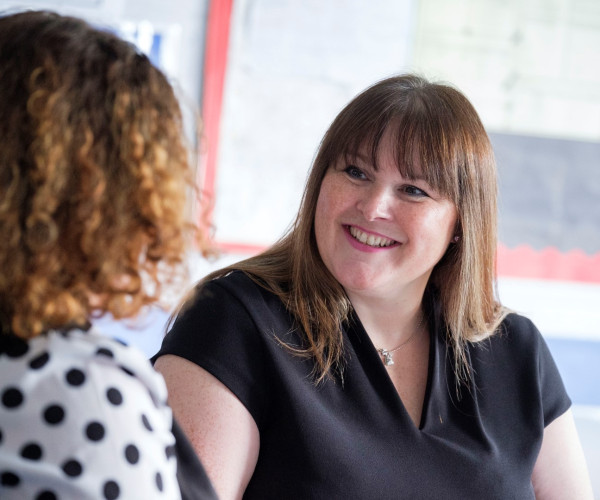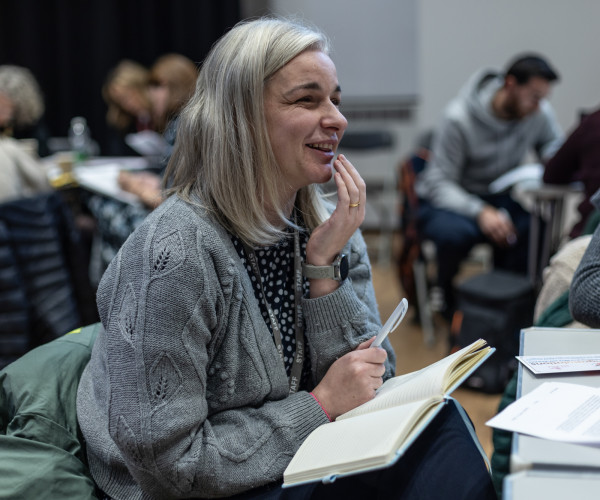Spotlight on Teacher Development in Singapore
Posted 5th March 2024
In January this year, I was lucky enough to be one of a group of English educators who visited Singapore in order to learn from their education system. We spent time with Singaporean school leaders and colleagues the Ministry of Education (MoE), National Institute for Education (NIE) and Academy of Singapore Teachers (AST). In November last year, Singaporean colleagues came to visit us here in England and we spent a similar week, learning from each other, visiting schools and the DfE. Despite the differences between the English and Singapore Education systems, we were particularly struck by the similarities in terms of our moral purpose, drive to achieve the best outcomes for children and young people, and the areas we were we are focusing on to improve practice. As my role is primarily focused on Initial Teacher Training (ITT) and continual professional development (CPD), I was interested in finding out about the national strategy for this.
The national context of Singapore is very different to our own. It is an island city-state with a land mass of 276 square miles making it a little less than twice the size of the Isle of Wight but with 40 times the population. There are 344 Primary, Secondary and Pre-university institutions educating 421,962 children. At the core of the Singapore Education System is the understanding that education and teaching are fundamental to the continued success and sustainability of this small nation, and it is this that frames intent and drives action at all levels of the system.
As education policy is so closely aligned with, and integral to, the future of the nation, the process for teacher recruitment is deliberately designed to only attract the best candidates into the profession. This means only taking candidates from the top 30% of graduates and paying prospective trainees to spend 6 months working in a school prior to finalising their application to ensure they ‘know’ that teaching is the right profession for them. This minimises withdrawals further into the training process when investment may have already been made into a ‘beginning’ teacher’s training.
There is a clear, national vision of what it means to be a teacher in Singapore which begins with the Singapore Teaching Practice (STP) Framework, developed collaboratively by the MoE, AST and NIE. This not only communicates the philosophy of curriculum and ‘shared beliefs and common language about teaching’ (STP) but outlines the pedagogical practices and knowledge base needed by all in the profession. There is an emphasis on competencies and skills, particularly in relation to the challenges of the 21st century which is reflected in the student curriculum also. This framework provides a strong foundation for, and coherent approach to, professional career development; it is used for teacher training and beyond and is understood and utilised by everyone in the system.
It is an expectation that teachers are highly reflective practitioners and are continually learning as professionals and a Teacher Growth Model (TGM) give structure to this and encourages teachers to take ownership of their own learning and progression. Investment in professional development is focused on teacher improvement rather than school improvement with leaders focused on leading teaching rather than teachers. A classroom teacher has three options of ‘career track’ which enable them to develop either in an expert teacher role, in a leadership and management role, or in a role which allows them to develop specialist knowledge and expertise. The career tracks provide opportunities for teachers to become deep pedagogical experts or progress to school and district leadership (and at a national level within the MoE, NIE and AST). Teachers can move between the three tracks if appropriate. This is powerful for several reasons: firstly, teachers have a clear understanding of how they can progress in their career and this ultimately supports retention. Secondly, talent can be spotted early and ‘funnelled’ in the right direction by leaders at all levels. Finally, the movement of knowledge and expertise both vertically and laterally within the system results in increased capacity, a high level of responsiveness and flexibility to meet need, both operationally and strategically. We also witnessed how this also allows for positive, deep professional relationships to develop between individuals in different parts of the system which strengthens partnership working and institutional interconnectedness. The MoE also oversees the movement of Principals around the system by transferring them to different schools every 6 to 7 years. The ability of individuals to move through the system, collaborate and follow different types of career paths results in high levels of professional agency for teachers and leaders.
A collaborative approach to teacher-centred professional development is evident at school level as well as regional and national levels. A range of methods are employed in schools to develop the subject knowledge and pedagogy of individual teachers, departments and to develop practice linked to whole school development priorities. Each school has a member of their leadership team in the role of School Staff Developer (SSD) working collectively with a committee of middle managers who make decisions about, and enact, staff development activities. The SSD balances the needs of the individual with the school, tracking teachers carefully and matching need to professional development opportunities that are available within the system or that are developing collaboratively at a more regional or local level through a cluster model that operates across districts.
The role of the mentor is widely understood and held in high regard, and the group met leaders in schools and the AST who explained that structured mentoring is the lynchpin for the development and retention of teachers and leaders. It is effectively embedded throughout the system and mentoring is introduced from the earliest career stage - with instructional mentoring being modelled for beginning teachers. Mentoring is seen as a non-judgmental, relational practice used to facilitate and deepen reflection. As the group observed multiple times in Singapore, there is a deliberate, planned and embedded approach to mentoring.
The English context differs significantly to Singapore, not just in size and scale; we have a much more complex, less centralised system for school leadership involving many more organisations such as Local Authorities and Multi-Academy Trusts (MATs). In my role, I can see how we are building a similar coherence in the system starting with the Initial Teacher Training and Early Career Frameworks progressing to the national suite of NPQs. The focus on the early stages of a teacher’s career is having a positive impact on the quality of teacher development and mentoring that beginning and new teachers receive. Although different MATs may have very different approaches to career paths and CPD for their staff, in the Trusts that we visited in England, teacher development and intentional practice were evident strengths. There was high alignment across the schools in relation to key features of effective pedagogy and the leadership skills required to ensure high quality practice existed across the school and MAT.
Essentially, the takeaway of this experience for me was that the principles underpinning strategies around strong teacher recruitment and professional development are: high expectations; clarity around the desired knowledge, skills and characteristics needed to be a great teacher; use of evidenced-based pedagogy and interventions; structured approaches to professional development, and leadership that focuses on strong implementation. Overarching all of this is the unwavering moral purpose that I see enacted by all of the teachers, schools and leaders I am privileged to work with in my role.
‘In becoming a teacher in Singapore, you do so on the understanding that you are moulding the future of the nation’ Academy of Singapore Teachers (AST), January 2024
By Sara Davidson, Director of Red Kite Education and John Camp, CEO The Compass Partnership of Schools





